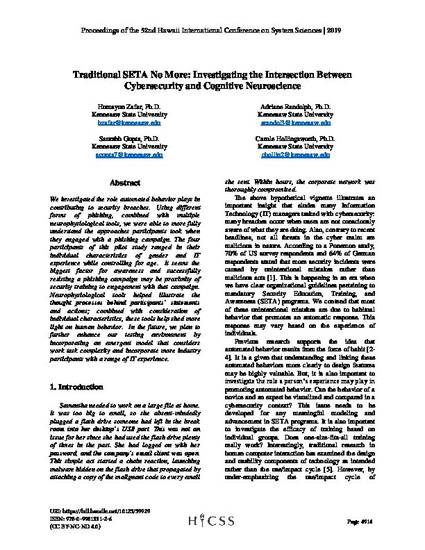
We investigated the role automated behavior plays in contributing to security breaches. Using different forms of phishing, combined with multiple neurophysiological tools, we were able to more fully understand the approaches participants took when they engaged with a phishing campaign. The four participants of this pilot study ranged in their individual characteristics of gender and IT experience while controlling for age. It seems the biggest factor for awareness and successfully resisting a phishing campaign may be proximity of security training to engagement with that campaign. Neurophysiological tools helped illustrate the thought processes behind participants’ statements and actions; combined with consideration of individual characteristics, these tools help shed more light on human behavior. In the future, we plan to further enhance our testing environment by incorporating an emergent model that considers work task complexity and incorporate more industry participants with a range of IT experience.
Available at: http://works.bepress.com/adrianerandolph/47/
